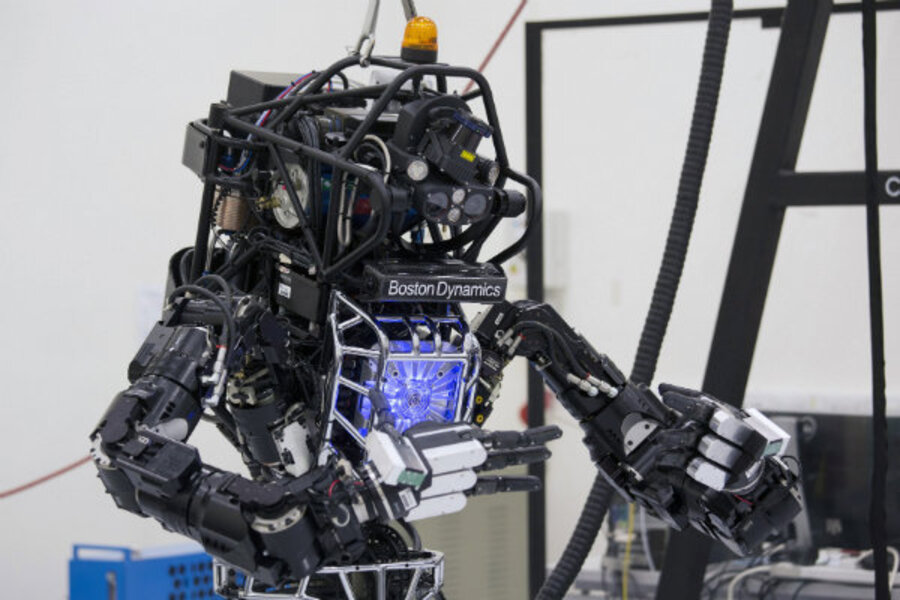Google acquires Boston Dynamics. Robot zoo to follow?
Loading...
They say that a dog is a man’s best friend. So does that make BigDog, Boston Dynamic’s four-legged robot, the best friend of Meka Robotics’ humanoid robot?
The answer lies with Google. The tech company recently acquired robotics company Boston Dynamics. This is Google’s eighth robotics acquisition in the past six months (one of which was Meka Robotics, a company that develops human-like robot parts), according to the New York Times. Boston Dynamics, however, offers a bit of a different breed to Google’s growing bot-based portfolio.
The Boston Dynamic bots look less like humanoid helpers, and more like mechanical beasts. There’s the WildCat, a dexterous four-legged robot than can prance on all terrains; Rise, an insect-like machine that can scale vertical surfaces; Cheetah, which can gallop at 29 m.p.h.; and SquishBot, which is built to change sizes and shapes to fit in difficult-to-access places.
Aside from its mechanical menagerie, Boston Dynamics has developed interesting humanoid technology, like Petman. Petman is a human-like bot that can balance, walk, squat, and do other human-like motions, plus simulates human physiology by responding to temperatures – in other words, it sweats. The company also has helped develop the humanoid robot Atlas (pictured above) for an international robotics contest in hopes of using robots to aid in hard-to-access areas that need disaster relief.
Boston Dynamics launched in 1992 out of the Massachusetts Institute of Technology, and since then has worked with clients that range from Sony to the US government's Defense Advanced Research Projects Agency (DARPA). It has not yet developed commercial projects.
Though Google is staying mum about what it plans to do with eight of the most cutting edge robot technology companies in the world, some signs have pointed to streamlining factory and delivery work. The tech company has put former Android developer Andy Rubin in charge of the initiative. But Mr. Rubin told the New York Times that the project is a “moonshot” and nothing solid would be developed at least for several years.
If consumer delivery ends up being part of Google’s plan, this would be a pointed move on the heels of Amazon announcing its development of PrimeAir, a drone delivery program that would bring goods to customers’ doors in thirty minutes.
Google did not disclose how much it paid for the Boston Dynamics acquisition.
Does this mean we’ll see a humanoid-robot walking a BigDog down the street in Silicon Valley sometime in the future? For now, we’ll have to wait and see.
"We are looking forward to this next chapter in robotics and in what we can accomplish as part of the Google team," Boston Dynamics co-founder Marc Raibert said in a statement.








